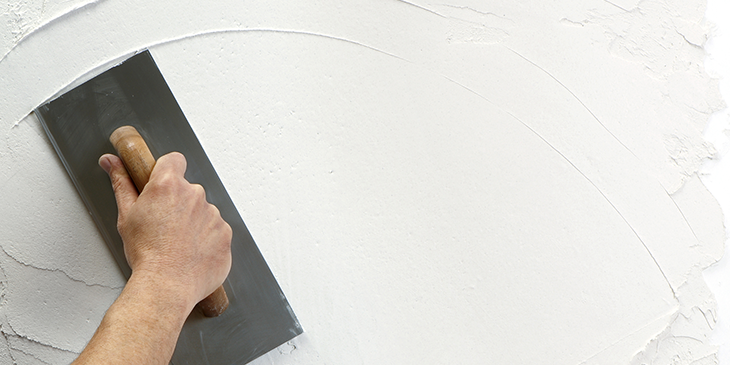Plastering Made Simple: Step-by-Step Overview for Beginners
Plastering Made Simple: Step-by-Step Overview for Beginners
Blog Article
Trick Tips and Devices for Successful Plastering in Your Home Improvement Endeavors
Achieving a remarkable plaster coating in your home renovation jobs needs a mix of the right devices and tested methods. Necessary applies such as the hawk and trowel are important for reliable application, while correct surface preparation lays the structure for success. Furthermore, comprehending the nuances of mixing plaster and using it in thin layers can significantly affect the last result. As we check out these basic aspects, it ends up being evident that avoiding usual risks can elevate your plastering skills-- ensuring your next task not just meets yet surpasses assumptions.
Crucial Plastering Tools
The crucial tools include a selection of executes made to assist in the gluing procedure successfully and successfully. Trick components consist of a hawk, which is a level, square tool utilized to hold the plaster while using it to surface areas.

Additionally, a mixing container is needed for preparing plaster, making certain the ideal uniformity prior to application (Plastering). Together, these necessary plastering tools make it possible for both specialists and Do it yourself fanatics to attain top quality results in their smudging projects.
Surface Area Preparation Methods
Appropriately preparing the surface area prior to smudging is vital for ensuring attachment and achieving a perfect coating. The initial action includes cleansing the surface to get rid of any kind of dust, oil, or old paint that might impede the plaster's ability to bond effectively. A comprehensive laundry with a suitable cleaning remedy is advised, followed by enabling the surface area and rinsing to dry completely.
Next, analyze the surface area for any kind of flaws or splits. These should be filled with an appropriate filler compound and allowed to treat according to the supplier's instructions. For permeable surfaces, using a primer is necessary to enhance and create an uniform appearance bond.
In addition, it is essential to ensure that the surface is stable and structurally noise. Any loose materials, such as flaking paint or harmed drywall, need to be fixed or gotten rid of. If dealing with masonry surfaces, consider using a scratch coat to boost hold.
Mixing Plaster Like a Pro

Making use of a clean blending container, put the water initially, after that progressively add the plaster powder while mixing continuously. This approach helps to prevent clumping and guarantees an even circulation of materials.
Once mixed, permit the plaster to rest for a couple of mins to allow the plaster crystals to moisturize fully. This pause improves workability and minimizes the risk of splitting during application. By adhering to these steps, you can mix plaster like a professional, setting the foundation for a successful smudging project in your house improvement undertakings.
Application Techniques for Smooth Finishes
With the plaster blend prepared to the suitable consistency, the next action entails choosing appropriate application approaches to accomplish a smooth surface. The selection of application devices considerably influences the final appearance of the plastered surface. For optimal results, a stainless-steel trowel is frequently suggested. This tool permits a penalty, even distribution of plaster across the surface area while minimizing trowel marks - Plastering.
Begin by applying a charitable quantity of plaster to the surface making use of the trowel, guaranteeing it sticks well. Use a systematic technique, working from the lower upward. Once you can check here the first coat is applied, make use of a sweeping motion to smooth the surface area, applying even pressure. In locations that call for more precise interest, take into consideration utilizing a float, which can help get rid of any type of blemishes and develop a consistent texture.
For the last touches, a damp sponge can be utilized to improve the surface area even more. Gently haze the plaster with water and gently massage the surface area to accomplish a sleek result. Constantly bear in mind to operate in tiny areas to preserve control over the application process, guaranteeing a smooth, professional coating throughout your plastering project.
Common Blunders to Stay Clear Of
When beginning on a smudging project, avoiding usual blunders is crucial for achieving a remarkable finish. Among the most widespread mistakes is ignoring surface preparation. Failing to tidy and repair the substratum can cause inadequate attachment and irregular surfaces. Ensure that all dust, oil, and loosened materials are eliminated prior to using plaster.
Another typical error is applying plaster as well thickly. Thick layers can break as they dry out, compromising the stability of the surface. Rather, choose numerous slim layers, allowing each coat to completely dry totally before using the following.
Furthermore, poor blending techniques can lead to inconsistent structure and workability. Always adhere to the supplier's guidelines for blending ratios and extensively blend the plaster to attain an uniform uniformity.

Timing also plays a crucial role; plaster must be applied while the substrate is moist to improve attachment. High-grade trowels and floats can make a considerable difference in attaining a smooth coating.
Conclusion
Effective plastering calls for a thorough understanding of essential tools and methods. Proficiency of these elements not only adds to the aesthetic charm of an area yet also makes sure resilience and durability in gluing jobs, making them integral to successful home enhancement endeavors.
A float is one more essential device, which helps in leveling the plaster and attaining a consistent surface area.

By adhering to these steps, you can blend plaster like a pro, establishing the structure for an effective plastering job in your home enhancement undertakings.
Lightly haze the plaster with water and delicately scrub the surface area to achieve a refined impact.
Report this page